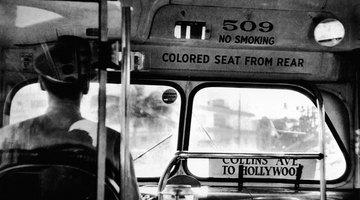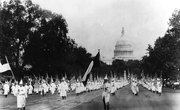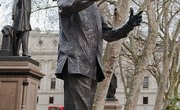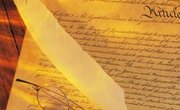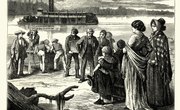African Americans faced racial oppression from 1900 to 1950. The nation released the race from slavery in 1865 and altered the Constitution three times soon thereafter to ensure equality before the law. Nevertheless, until the gains of the 1950s and 1960s Civil Rights Movement, private citizens and state governments openly discriminated against African Americans with seeming impunity.
Segregation
At the turn of the 20th century, Southern state governments instituted racial segregation laws to separate whites and African Americans. The Supreme Court in 1896 found state segregation laws constitutional, despite the Fourteenth Amendment guarantee of equality for all citizens. States could require separation of the races as long as the services provided were similar. In reality, most African-American institutions and provisions were of an inferior quality. The Southern states kept African Americans separated from whites in almost all facets of life. In some cases, the disparities were appalling. For example, throughout the South expenditures for African-American education paled in comparison to that accorded whites. Africans Americans held a visible second-class citizenship status in the region.
Lynching
In tandem with government-enforced segregation, some Southern whites maintained the status quo through violence. The most visible and extreme manifestation of this violence was lynching. African-American males were the primary victims of these crimes. Lynching involved hanging and torturing a person for a supposed infraction of social rules. In many instances, newspapers would advertise upcoming hangings. Southern law enforcement rarely prosecuted these murders.
Voting
Despite the Fifteenth Amendment guarantee that no state could deprive the right to vote because of color, few African Americans voted in the South. If unperturbed by the possibility of lynching, potential African-American voters still had to surpass obstacles to register. Poll taxes required payments often accrued over decades. Poor African Americans usually could not afford the amount. Literacy tests, applied subjectively by the register of voters, forced some people to demonstrate sufficient comprehension of state and national laws. Last, political parties could refuse to admit African Americans as members, denying them the ability to vote in primaries. The Democratic Party held a monopoly on political offices in the South. Consequently, African Americans who could not vote in the Democratic Party primary essentially played no role in choosing their public officials.
North and West
Oppression of African Americans was not limited to the South. More than four million African Americans migrated to Northern cities from 1910 to 1960, where they lived in squalid tenements and paid relatively high rents. African Americans faced social restrictions. Even in Harlem, a haven for many of the migrants, establishments such as the Cotton Club refused to accept black patrons. Whites could respond violently to racial minorities attempting to use municipal recreational facilities. On July 27,1919, white youths in Chicago stoned Eugene Williams to death for apparently wading into a "restricted" area of the 29th Street beach. The incident touched off thirteen days of race rioting. When the destruction ended, over 1,000 African Americans were homeless.
People who relocated in the West encountered similar proscriptions. In Los Angeles, African Americans had to live in segregated areas concentrated around Central Avenue. Furthermore, African Americans could only expect to hold menial jobs in the booming West Coast defense industry. That is until President Franklin Roosevelt, under pressure from civil rights leaders in 1941, issued Executive Order 8802, prohibiting defense contractors from racially discriminating when hiring.
Related Articles
References
- Oyez: Plessy vs. Ferguson (1896)
- Ghosts of Jim Crow: F. Michael Higginbotham
- PBS: People & Events, Lynching in America
- Religion, Culture, and Politics in the Twentieth-century United States; Mark Hulsether
- Cornell Law School: 15th Amendment
- Encyclopedia of Virginia: Poll Tax
- Politics and Society in the South; Earl Black
- Texas Historical Association: White Primary
- Encyclopedia of African American History 1896 to the Present, Volume 1; Paul Finkelman, Ph.D.
Resources
- North by South: Living Conditions
- Making Whiteness: The Culture of Segregation in the South, 1890-1940; Grace Elizabeth Hale, Ph.D.
- Black Victory: The Rise and Fall of the White Primary in Texas; Darlene Clark Hine, Steven F. Lawson and Merline Pitre
- PBS: Red Summer (1919)
- The Great Black Way: L.A. in the 1940s and the Lost African-American Renaissance; R. J. Smith
Writer Bio
David Kenneth has a Ph.D. in history. His work has been published in "The Journal of Southern History," "The Georgia Historical Quarterly," "The Southern Historian," "The Journal of Mississippi History" and "The Oxford University Companion to American Law." Kenneth has been working as a writer since 1999.

